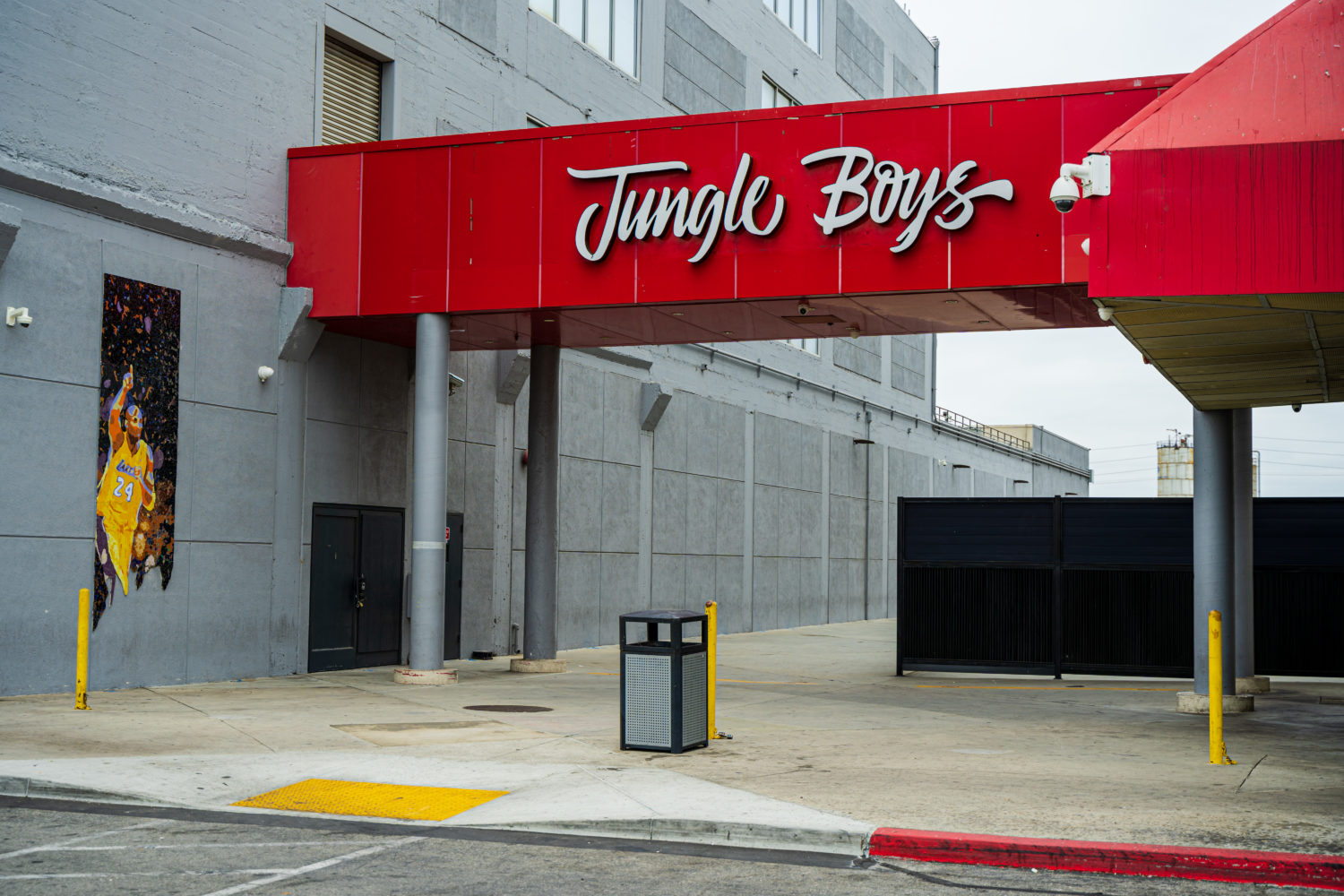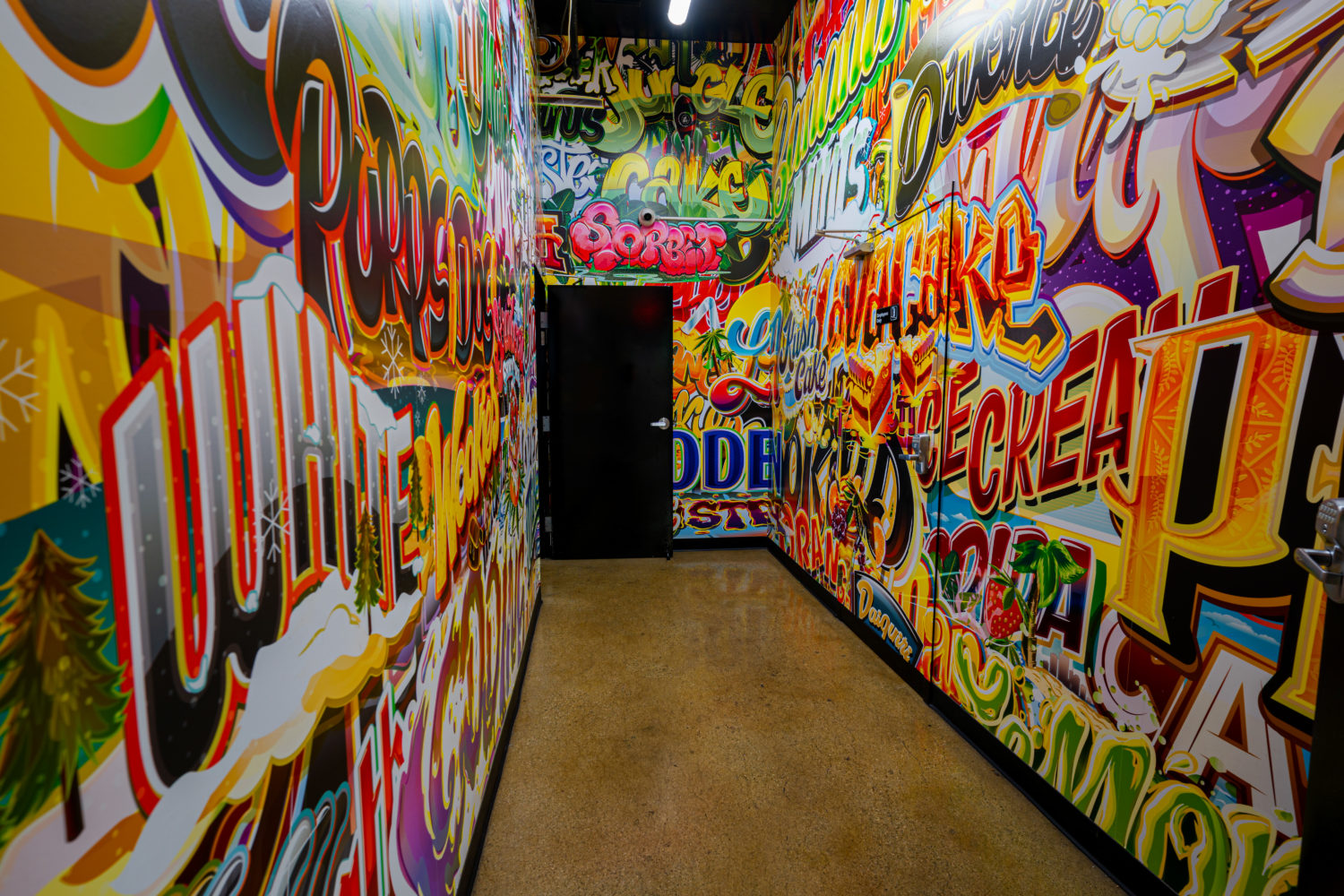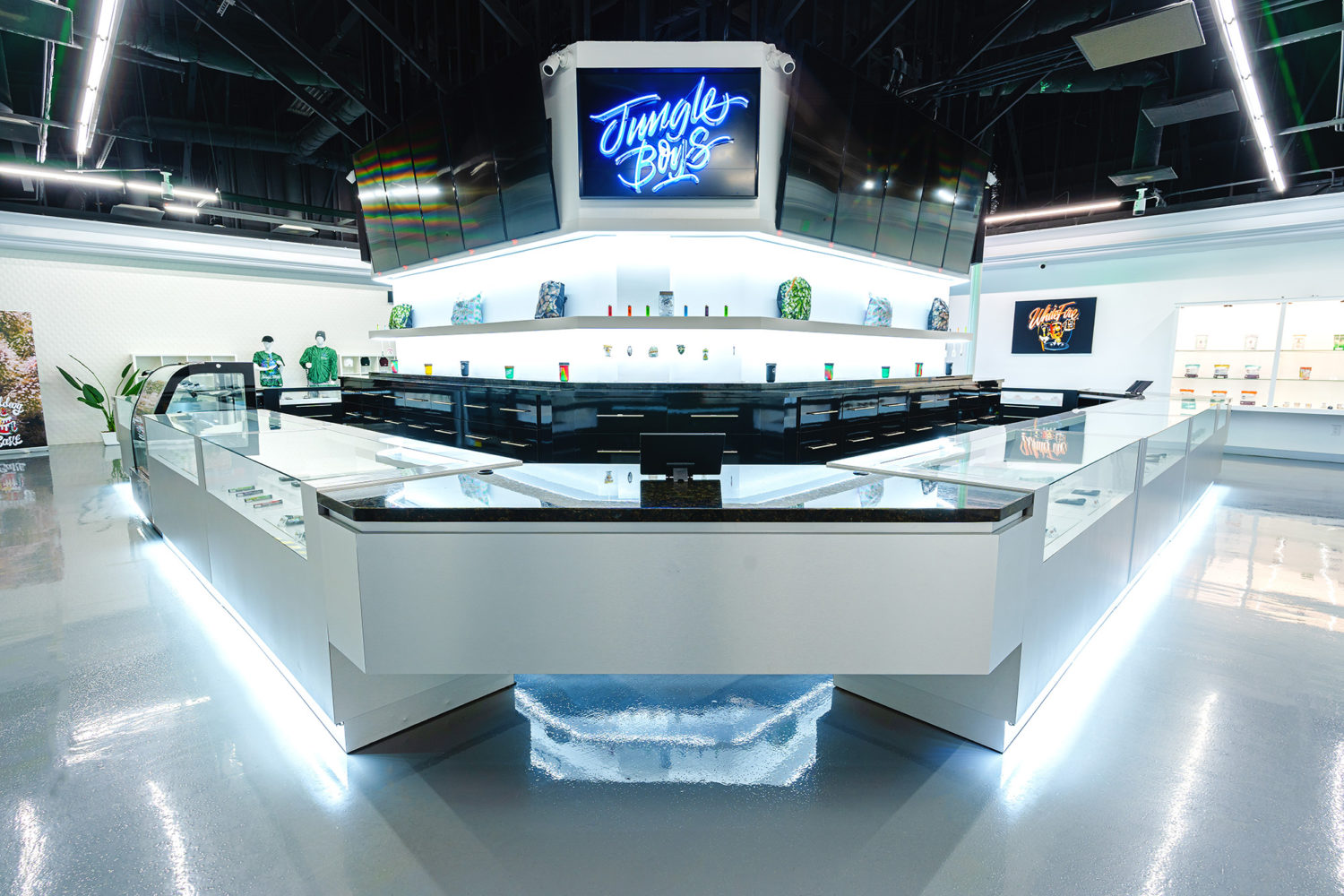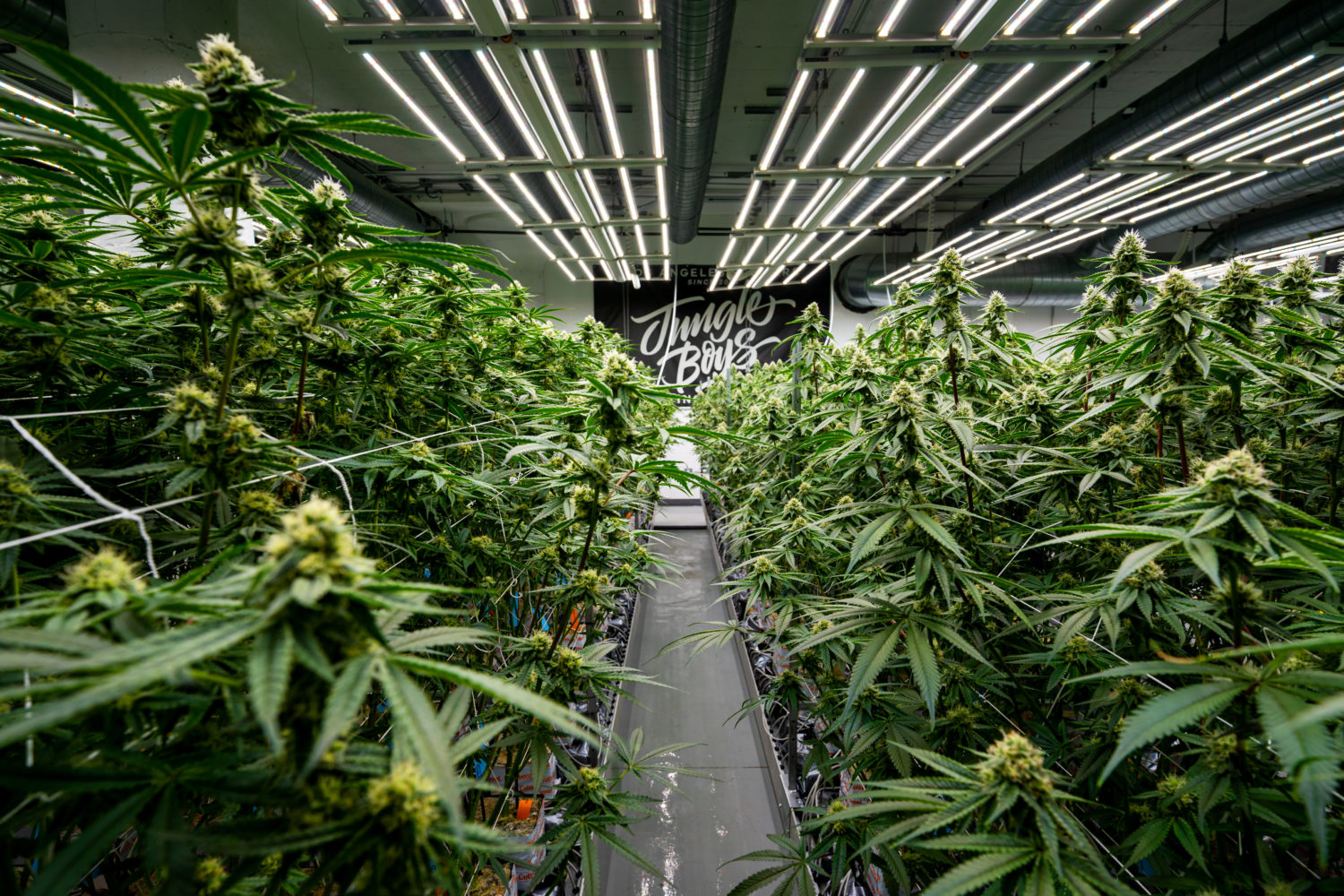For every special cannabis issue we do here at L.A. Weekly, we always try to feature someone who is absolutely crushing. Once we knew we had the chance to talk new tech, pandemics, and generally surviving the perils of the California cannabis market with the Jungle Boys, the choice was easy.
The Jungle Boys have been at the head of the pack when it comes to most of the newer aspects of cannabis. Despite dating back to the dark ages of the middle 2000s when they first got their hands on Toluca Lake Collective, commercial construction came easy to them from their lives before cannabis was ready for it, and as the warehouse scene popped off bigger and bigger over the years, they did too.
Prior to Proposition 64 bringing down the axe on many, the L.A. cannabis scene was hyper-competitive. Be it growing flowers nice enough to get in premier dispensaries or just finding the warehouse space to do it. It wasn’t easy.
Was it easy for people trapping their faces off growing OG Kush on stolen power and mailing it to kids in Cincinnati? Sure. But for those getting their ducks in a row and preparing for the aftermath of Election Night 2016, it was not easy. It wasn’t as hard as it is now, but certainly a bit more mysterious with different challenges.

The Jungle Boys’ Headquarters at TLC on East Olympic Boulevard.
Just getting a warehouse was challenging. In the modern era, it’s a lot easier to find a spot to grow because more landlords are willing to cash in. Back then, you took what you could get once you found a landlord not scared of having their property fall victim to asset forfeiture via the federal war on medical marijuana. The Jungle Boys were one of many groups that ended up with a network of smaller grows. Eventually, those organizations, the Jungle Boys among them, would look to consolidate into a smaller number of spaces with an equal or larger footprint.
The Jungle Boys had been in the midst of this process as the pandemic hit.
“The whole COVID thing has been crazy,” Ivan of the Jungle Boys tells L.A. Weekly. “Before they made cannabis an essential business we weren’t sure if we were going to have to shut down. I remember there was a couple of days we were in full panic mode. What do we do with all of our employees? What do we do with our plants? And they’re saying there’s a curfew, and you can’t go outside?”
But with a quick statement from Gavin Newsom on the matter, California started the trend of making cannabis essential.
“Of course we’re essential,” says Iva, thinking of his response to that moment.

TLC’s famous entrance.
But through it all, they would navigate the pandemic better than most. At the time of our chat, their crew had remained healthy through the long months of lockdown. They never closed their doors to recreational customers or patients at any point.
Ivan believes the cleanliness of their stand operating procedure helped keep the team ahead of any problems.
“We run a very clean and tight operation to begin with,” Ivan notes on their pandemic successes. “We’re very sterile and we’re already basically above hospital grade on everything. So I think we felt confident that we could still run a proper operation, and I think we showed that. During a crazy pandemic, when a lot of people shut down, we kept working seven days a week. We never shut down.”
Make no mistake about it, the week before lockdown was the craziest time ever for retail cannabis. No 4/20 has ever compared to the fear of being locked in the house without weed for an unknown amount of time. As with most dispensaries, the week was the busiest ever for the Jungle Boys.
“We’ve always been busy and crazy and have long lines,” Ivan says of the rush on TLC and the other locations. “But when everyone thought things were going to shut down, it was definitely our biggest month or two. I think everyone was kind of in panic, including us. What’s going to happen if we shut down? But it was definitely a good couple of months.”
After covering the most obvious subject of the moment, we moved the discussion on to a variety of other topics. Among them was the debate over the success of Prop. 64. While there are plenty of ways to approach that line of questioning, we focused on the idea that part of what Prop. 64 was supposed to do was bring the grey market that existed before legalization into the light. We asked Ivan if he thought that was the case. This week also marks the fifth anniversary of the vote.
“If anybody asked me what I think about California, I think we fucked it up,” Ivan quickly retorted. “I think we fucked up the industry – the overregulating and overtaxing, and now all this crazy shit that’s going on with all these distros. Oklahoma’s markets flooded. And California has allowed all these giant cultivation facilities but hasn’t allowed the stores. All these cities that are allowing us to cultivate, well they’re not allowing us to open up stores.”

The counter at Los Angeles Farmers.
The lack of retail shelf space is currently a major bottleneck for the development of the wider industry. Most notably, it’s hurting the small farmers who have to compete for what room is left on retail shelves after the dispensaries fill much of it with their own product in hopes of surviving how expensive it is to own a pot shop. One thing the Jungle Boys definitely had on their side was the fact they never battled for shelf space in the rec era. By the time they sent their products north for the first time a few months ago, Bay Area heads were making the hour drive to Modesto a few times a week to get their hands on it. It sold itself.
Ivan says they’re lucky to have a legacy brand that’s been around a long time that can move its flower. But where is the rest of this weed going? He sees people starting five to ten thousand light grows with no brand or shop in play and isn’t shocked at the path it has led the wider industry down.
“If they’re not going to allow more stores and lower the taxes, then don’t complain when the market’s flooded, and all these distros are doing all this crazy shit,” Ivan emphasizes. “What did you expect? Where did you think all the fucking flower was gonna go if you’re overtaxing and over-regulating it and you’re not letting people sell it?”
He pointed to their new experiences in Florida where a cultivator can essentially open up however many stores they want. He didn’t claim that’s necessarily the right way, but he’s sure there’s a happy medium.
“Allowing someone to have a 10,000-light grow and not have a store, you’re just asking for trouble,” Ivan says.
One of the things that made the Jungle Boys famous well beyond California’s borders was they were essentially a glimpse into the latest and greatest weed tech in their quest to further perfect the process and meet the needs of a customer base that demanded they grow a lot of heat.
We asked if the overregulation of California’s cannabis industry ever impacted their ability to be as cutting-edge as possible now that there is more oversight than ever. While it was a factor, Ivan is more concerned with all the hoops just making it all less enjoyable.
“It’s definitely slowed things down, right?” Ivan says. “It’s definitely taken the fun out of it, not being able to have events and not being able to throw cool things all of our customers.”
Ivan argues those kinds of big events pay more money in taxes than anything else.
“We can’t have a bunch of food trucks here?” Ivan asks. “Why the fuck not? Why do you care, as long as we’re paying all of our taxes and you guys are making billions of dollars off it? Why the fuck do you care if I have a DJ, and I have a food truck outside.”
But inside under the lights, they’ve never stopped tweaking. Most notably in the last year as they become one of the more preeminent names in the country to start talking about their work with LEDS.
For decades, the best marijuana has been grown under high-pressure sodium bulbs. While the tech has had slight upgrades to maximize power and efficiency over the years, nothing else really came close in quality. That’s changing. The gap between LED and HPS has significantly narrowed. Ivan now counts himself among those admitting the gap has closed.
“I had to eat crow this year because I’ve always been the guy who talked shit about LEDs,” admits Ivan. “We’ve been given so many LEDs from so many different companies and we didn’t have great results with them. And I didn’t think that the technology was there.”
They knew that it was the future, they just didn’t know when it was going to be right.
“It’s like if somebody told me I’d be driving an electric car I would have them you’re fucking crazy,” explains Ivan. “I’ve never driven an electric car and now I drive an electric car, so it’s the same thing with these LED lights. It’s like you always heard, ‘Oh, LED could never produce what an HPS produces.’ And then we started seeing this new technology come out where we’re like, ‘Wow these LED are actually better than HPS.’ They’re more efficient, they run cooler, they last longer, and I had to come out and say listen I was wrong. The technology is here and I’ll admit when I’m wrong.”
As a testament to their belief, the new facility coming online for their Florida effort will be all Lux LEDs and every facility they build from here on out will be too. Ivan doubts they’ll ever look back.

One of The Jungle Boys’ LED rooms.
But what made some of the most famous growers on the planet commit to the switch? Two rooms of some of the best pot they’ve ever grown while they were still essentially trying to dial in the new lights.
“Once I saw that, I said well now you know if we can do this, with these genetics and this environment and we’ve grown some of the best flower we’ve ever grown,” recalls Ivan. “That was with us still figuring it out a year and a half ago. Now that we have it fully figured out, we understand that there’s a lot more spectrum in those LEDs.”
Ivan felt like in the early days of LEDs people would end up hitting the plants with too much of the light spectrum. As they stressed the plants, they responded by producing more waxes and lipids like they would if they were under harsh sun or wind conditions. Essentially, these big indoor LED grows would look the same quality as outdoor.
Ivan believed, at the end of the day, the reason why some of the quality was going down with all these LEDs is because people weren’t matching the environment and nutrients to this full spectrum they’ve been given.
“There’s definitely a fine line, where you could give it too much LED and you end up looking like you have a bunch of outdoor flower indoor,” Ivan says. “I think finding that line is what we did during this whole COVID thing. We really dove into it and did some R&D with Lux and figure out this LED stuff.”
Once they started having major breakthroughs, it was pretty obvious the direction things were heading for the future.
“We figured out this is how we match the same quality as HPS or better,” Ivan tells us. “Once we did that, we were like, ‘Okay, we got it, we’re going to run LED from here on out.’ We believe what we found is 100% the future of growing.”
Advertising disclosure: We may receive compensation for some of the links in our stories. Thank you for supporting LA Weekly and our advertisers.

